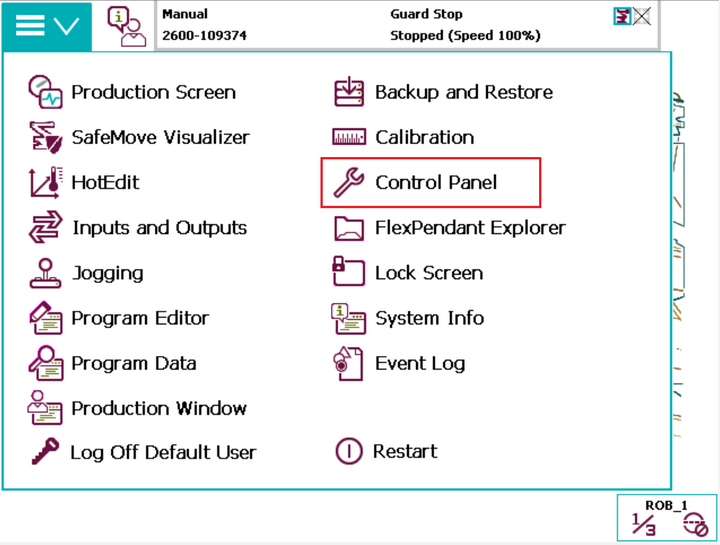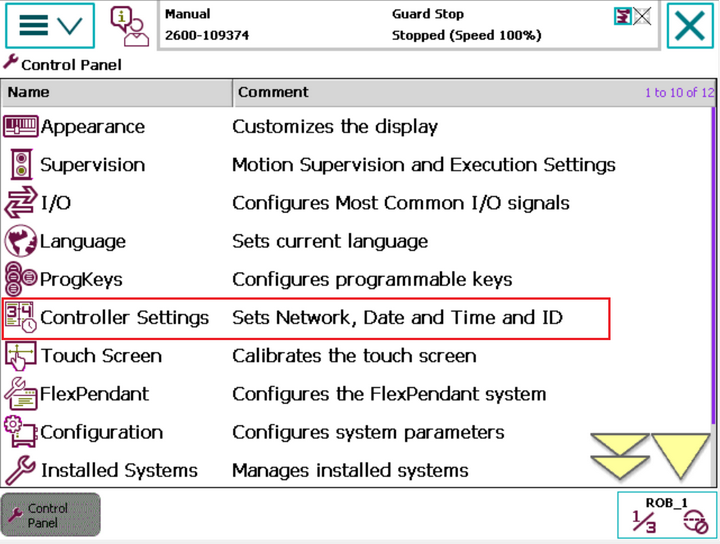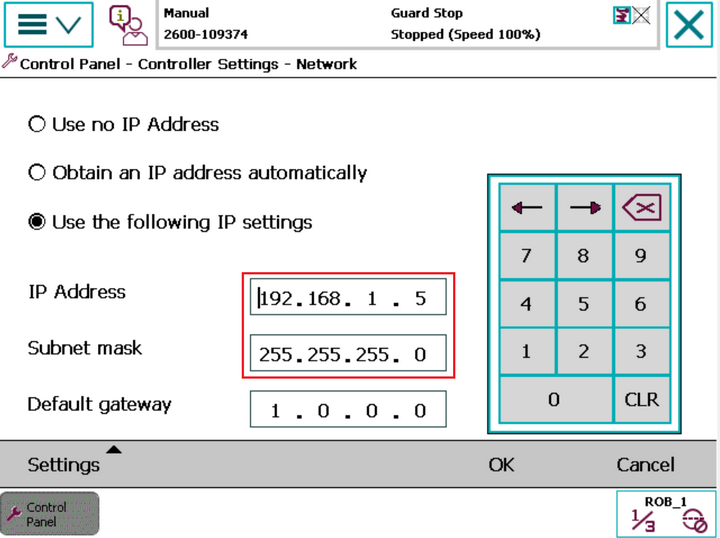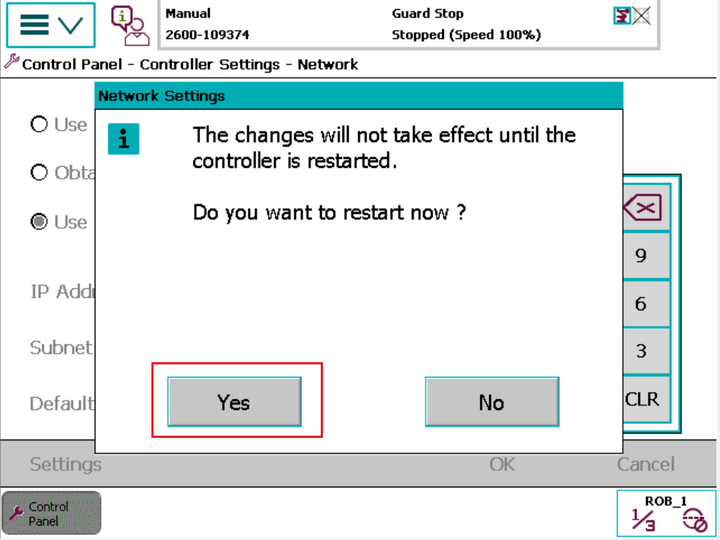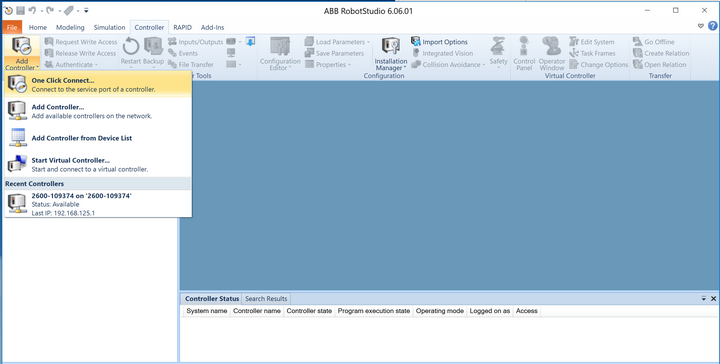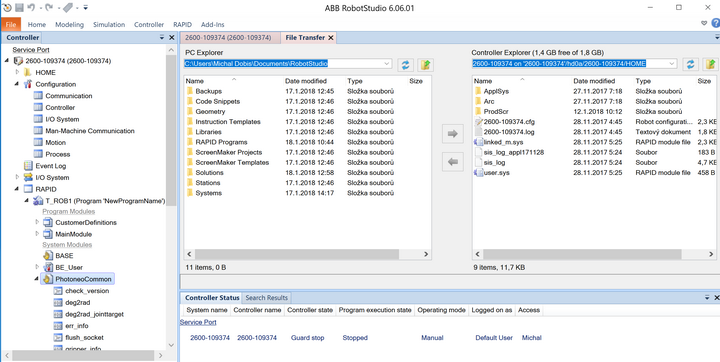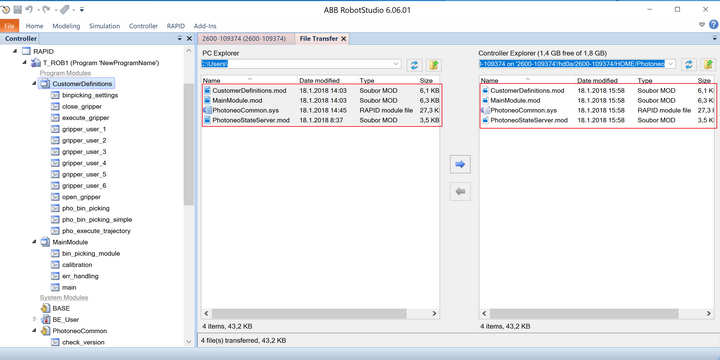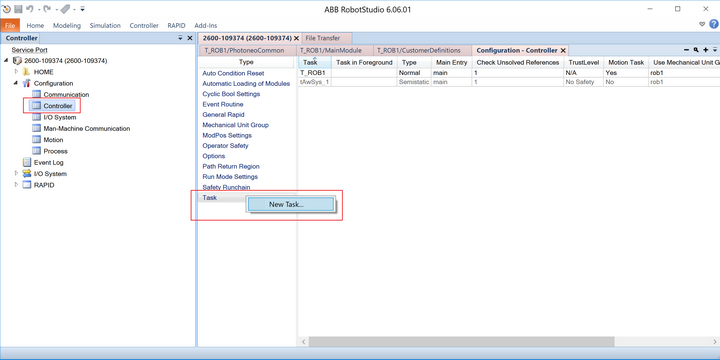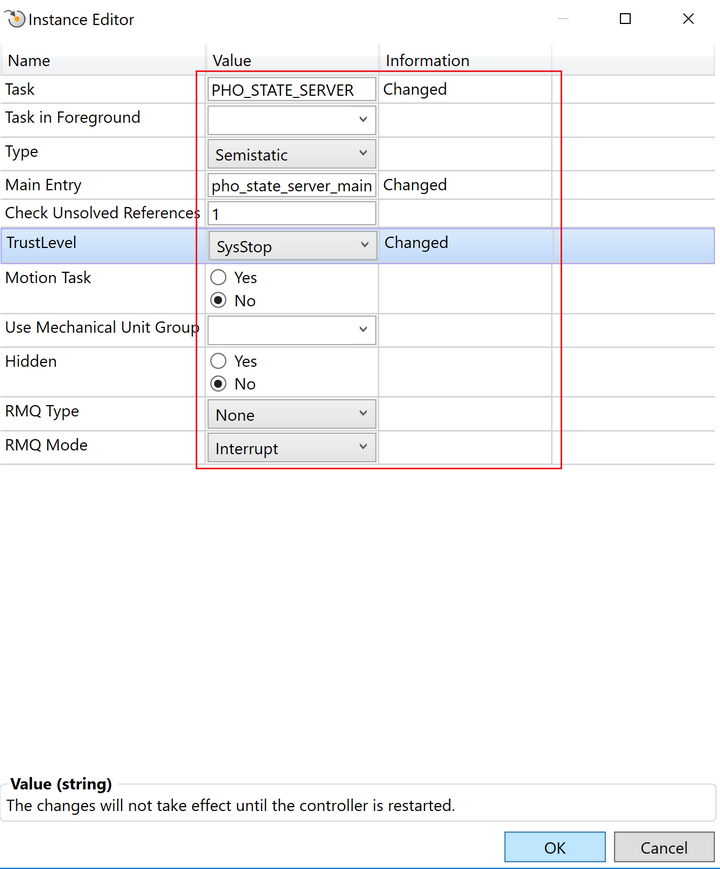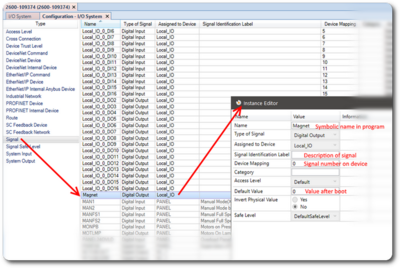Difference between revisions of "Bin Picking Tutorial: Setting up Photoneo Bin Picking Studio with ABB robots"
| Line 16: | Line 16: | ||
== 2. ABB Controller setup == | == 2. ABB Controller setup == | ||
| − | Following tutorial gives a step by step guide how to configure your ABB IRC5 controller and install all necessary RAPID files to get the robot interface for Photoneo Binpicking Solution | + | Following tutorial gives a step by step guide how to configure your ABB IRC5 controller and install all necessary RAPID files to get the robot interface for Photoneo Binpicking Solution running. |
This tutorial was originally written using the latest RobotWare v.6.06, however it should be compatible with older versions with minor changes. | This tutorial was originally written using the latest RobotWare v.6.06, however it should be compatible with older versions with minor changes. | ||
| Line 40: | Line 40: | ||
| − | Network settings window should appear. Use the '''touch panel keypad''' to set IP address of IRC5 WAN port: | + | Network settings window should appear. Use the '''touch panel keypad''' to set an IP address of the IRC5 WAN port: |
| Line 86: | Line 86: | ||
- '''PhotoneoCommon.sys''' | - '''PhotoneoCommon.sys''' | ||
| − | + | All these files need to be transferred to the ''HOME:/Photoneo/'' folder created within the robot controller file system as shown by the figure below: | |
| − | All | ||
| Line 102: | Line 101: | ||
[[File:Robot studo task definition.png]] | [[File:Robot studo task definition.png]] | ||
| − | Following dialog should appear. Use | + | |
| + | Following dialog should appear. Use settings as shown by the figure below: | ||
| + | |||
[[File:Task state server.PNG]] | [[File:Task state server.PNG]] | ||
| + | |||
Revision as of 17:23, 18 January 2018
1. Prerequisities
Following conditions must be met:
- (616-6) PC Interface Module available
- (672-1) Multitasking Module available
- RoboTWareOS 5.13 and higher
+
- Robot Studio Installation (v.6.04 and higher is recommended)
2. ABB Controller setup
Following tutorial gives a step by step guide how to configure your ABB IRC5 controller and install all necessary RAPID files to get the robot interface for Photoneo Binpicking Solution running.
This tutorial was originally written using the latest RobotWare v.6.06, however it should be compatible with older versions with minor changes.
2.1 Network configuration
Turn on the IRC5 Controller, wait for Initialization Screen to appear, open Menu screen and select Control Panel option:
On the Control Panel pane, select Controller Settings:
Select Settings and choose Network option:
Network settings window should appear. Use the touch panel keypad to set an IP address of the IRC5 WAN port:
Press OK button and restart the controller to apply new settings:
3 Robot Studio Setup
3.1 Connect to IRC5 Controller from Robot Studio
Set your local PC network settings to DHCP, plug Ethernet cable to Service Port of IRC5 Controller and launch Robot Studio.
For direct connection to Robot Controller, select Controller tab and One Click Connect option:
3.2 Transfer RAPID files
As a first step in installation of Photoneo ABB Interface, you need to copy RAPID files from your PC to the Robot Controller
You can use USB stick and copy files directly via pendant, however the most convenient way is to use Robot Studio File Transfer tool.
Go to Controller tab and select File Transfer tool from the menu:
Photoneo ABB Interface consists of four RAPID files:
- MainModule.mod
- CustomerDefinitions.mod
- StateServer.mod
- PhotoneoCommon.sys
All these files need to be transferred to the HOME:/Photoneo/ folder created within the robot controller file system as shown by the figure below:
3.3 Create State Server Task
As a next step we need to create State Server Task. State Server Task will run in background and will be used to report current robot state to the Vision Controller.
On the Left pane, click Controller' then right click on the Task item in the list and select New:
Following dialog should appear. Use settings as shown by the figure below:
2.6 Configuring a I/O
2.6.1 Preparation
Assemble cables (tall box on palette with controller), specifically XP1, XP13, XP2 to the bottom side of controller, with their respective connectors on the base of robot.
2.6.2 Setting up I/O
Various links are accessible on panel inside cabinet. These signals are wired throught XS/XP13 connector underneath the cabinet, throught connection in base of robot to R1(2).CP and R1(2).CS. XT6/6.1 signals 1 to 4 are usually used to power your device (4x1mm2) with link to R1(2).CP and connectors XT5.1, XT5.2 and XT5.3 are used to provide signals for your accessories carried by robot with link to R1(2).CS.
2.3.3 Accessing signals in program
Usually a I/O slave is supplied with robotic controller. If not install one inside cabinet and in Configuration - I/O System tab. Once completed a list of device’s Inputs/Outputs may appear in Signals tab. Configure them according to their specific purpose. A example of signal configuration is shown below:
